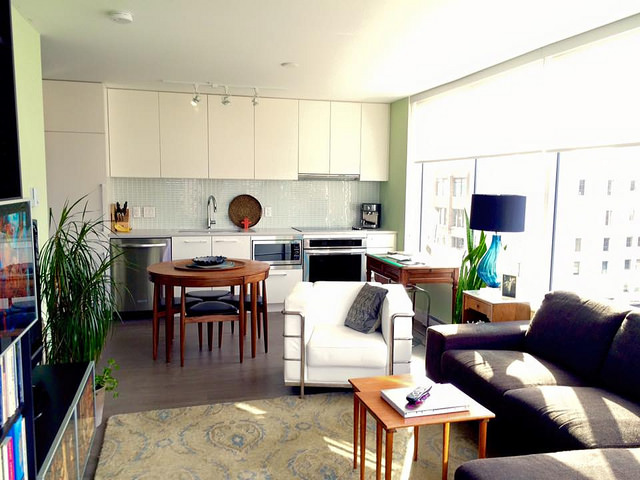
How to Stay Sane in Small Living Spaces – Part 2
Last time in Part 1 of this small living space article series, we talked about purging, getting rid of unwanted or unneeded items in your house to eliminate clutter in a small living space. Today, let's talk about organization.
When your home is in dire need of serious organizing, it can be a major challenge to make it look clutter-free. And living in a home that lacks closet or storage space means you have to get creative on where to put the stuff.
But once you go through Step 1 that we talked about last time, organizing your home will get easier.
The biggest issue with small spaces is a lack of a designated spot for everything. Shelf or counter space may be limited, cupboards could be few and far between, storage space could be poorly designed. Whatever the case may be, there are some things we can do to make our lives a little easier and our homes better organized.
Purging is an important step to organizing a small home. If you miss this step, you'll miss out on the benefits. If you're having a hard time bringing yourself to get rid of stuff you don't need or will never use, think back to why you wanted to organize your home in the first place. Is it the stress and overwhelm of having clutter everywhere, the frustration of having nowhere to put stuff (remember, it just gets thrown into the closet and adds to the pile, right?), or the embarrassment of having a messy house?
If you still can't get yourself to do this step, there's still hope for you – you'll just have to get really creative with organization.
So, what are some tips for organizing your small living space?
Compartments
Just like how compartments help keep things separated and organized in women's handbags, they also work great in closets and cupboards. Compartments can be in the form of wicker baskets, plastic bins, fabric or canvas bags, or simple dividers.
When I organized my spices, I set them out on the counter, fit them into a rectangular shape, took measurements (height, width, length), and hit the store (Walmart in this case) in search of a plastic bin as close as possible to the minimum dimensions. I found one that was just a smidge over what I needed and it worked perfectly. Now, instead of my spices getting thrown into a cupboard and making a mess when they get knocked over, I'm able to store the majority in a container that is portable and easy to access. Each spice has its own location in the bin and is easy to find.
Compartments also work great for pantries to organize food, boxes, cans, recipe books, or small kitchen appliances; hall closets for overstock or random bathroom items; bathroom cabinets… you get the idea.
Put the little stuff in a container, but don't just throw them in there. Put your Tetris skills to good use and find the right fit for each item.
Segregate.
Organizing your home by category will make things a lot easier to find. Categories could include overstock bathroom items, bedding and blankets, camping gear, kitchen items, general household items like light bulbs and cleaning supplies.
Decide how you want to categorize each item and where you want to store it. Maybe some cleaning supplies should be in the kitchen and others in the bathroom. Consider how you use the items. Does it make sense to store a tub of cleaning wipes under a bathroom sink instead of storing everything in the kitchen (or wherever you keep your cleaning supplies)? What will make your life a little easier?
Also, instead of throwing items in a hall closet willy-nilly, give like items a separate shelf or section. For example, all of the bedding and blankets on one shelf and the overstock bathroom items on another shelf.
Remove any items that could be in the garage or basement (if you have one). And if you happen to have multiple locations for storage (i.e., extra bedrooms, closets, etc.), use one location per category. Keep all of your camping gear in one location such as the garage or in a bedroom closet. If you have cast iron cookware or any camping items that are filthy, then obviously those items should be stored in a garage or somewhere other than the inside of the house. But for the most part, keep like items together.
That's it for today. Stay tuned for Part 3!
- It’s been a long time… - February 10, 2024
- Realizations About Tracking Progress - May 28, 2020
- Goal Setting & Productivity 101 - May 25, 2020
